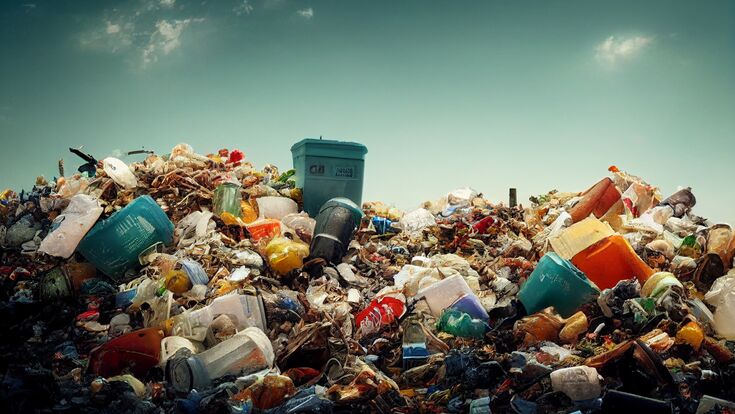Plastic Recycling : EIB: New study reveals 6.7 billion investment gap to meet Europe's plastics recycling targets

The European Investment Bank (EIB) has published a new study entitled "Cutting plastics pollution - Financial measures for a more circular value chain". The study analyses the inefficiencies in the plastics value chain and how to address them. It examines ten root causes of the plastic waste problem. It identifies investment opportunities and policy measures that can help tackle the world's growing plastics crisis.
The production, rapid consumption and widespread discharge of plastics into the natural environment - both on land and at sea - has increased exponentially over the past 70 years. The implementation of a fully circular economy for plastics is essential given the increasing complexity of the underlying compounds.
Billion Euro investement gap
The European Union performs relatively well in the global context in tackling plastic waste pollution and has set ambitious targets in the European Strategy for Plastics. However, the report finds that an estimated investment gap of 6.7-8.6 billion Euros needs to be closed to meet Europe's committed target of placing 10 million tonnes (Mt) of plastic recyclate in final products on the EU market each year by 2025. Achieving these targets will require significant investment and a reliable end market for recycled content. The biggest gaps in sorting and recycling have been identified in the EU's cohesion regions, particularly in Central and Eastern Europe and South-Eastern Europe.
Given the complexity of the plastics value chain, many of the necessary improvements will require policy measures combined with targeted financial instruments. The study's policy recommendations include legislative measures to tackle plastic packaging that is difficult to recycle, restrictions on composite packaging (such as paper and plastic packaging), and the introduction of recycling quotas, combined with public awareness campaigns.
Address plastic problem now
The report, carried out by the Bank's Innovation & Digital Finance Advisory Division under the European Commission's InnovFin advisory mandate, concludes with financial recommendations to address the problem of plastic waste pollution both inside and outside the European Union. These include loans to corporates, mid-caps, municipalities and local authorities, as well as support for research, development and innovation activities.
EIB Vice-President Ambroise Fayolle said: "Among the many crises facing the world today, one is hiding in plain sight: the plastic pollution crisis. Plastics cause significant pollution and are at odds with the need to limit carbon emissions. The circular economy agenda represents a key opportunity to address the problem, but this will not be achieved without significant investment and innovative policies. The EIB, through its financing of the public and private sectors worldwide, stands ready to play its part in addressing this issue. This study provides a clear direction by unpacking the many complex layers of the plastics value chain and proposing solutions to its inefficiencies".
The key findings of the study
- Plastic packaging is the biggest contributor to the plastic waste problem.
- 25 companies are responsible for half of the global plastic production.
- The economics of sorting and recycling and the market for recycled plastics remain challenging compared to the current situation.
- The solution to strengthening the circular, sustainable plastics economy lies in a combination of new policies, increased capacity, and transformative innovation in the design, collection, sorting, and recycling of plastics.

